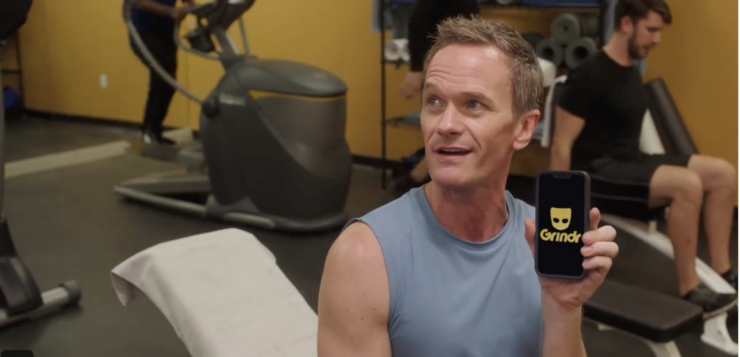
IN THE EVENT that you missed last year’s Netflix release Uncoupled, the eight-part series followed the life of Michael, a forty-something gay man played by Neil Patrick Harris, as he navigates the world of gay dating in New York City following the unexpected departure of his partner of seventeen years (Colin, played by Tuc Watkins). This brave gay world includes PrEP and “dick pics,” which are all but unknown to the show’s protagonist. In addition to HIV prophylaxis and virtual penises, Michael downloads the requisite app for single (and some coupled) gay men like himself: good old Grindr. Michael is now “out there,” so he goes to a gay club with friends, who inform him that many of the patrons on the dance floor are simultaneously on Grindr. “Why are they on Grindr when they’re right next to us?” Michael inquires. A friend assures him that “this is how you meet people now. You’ve been away a long time, Rip Van Winkle.”
Grindr, now fourteen years old, has become a mainstay smartphone app for members of the queer community, and a virtual landscape for gay men and queer people to interact in, as well as to find hookups. Having been on Grindr myself for some time, I’m struck by how its users, myself included, live a portion of our lives on the app, in a world of faces, anonymous chests, and stock photos in small squares forming a grid. In any case, it’s a very different world from that of gay bars, bathhouses, and cruising parks, not to mention gay neighborhoods where clubs, pubs, apartments, and condos are teeming with queens, twinks, and bears, to name a few subgroups. Not that the bricks-and-mortar gay world has entirely disappeared, as witness Uncoupled; and the two worlds can indeed coexist. I can remember chatting with gay friends in Boystown about who was in the bars and what we knew about them from their profiles on the app. Grindr is a queer space in its own right, but it also influences the dynamic of these physical spaces.
Queer people have long been associated with the city. In his 2005 book In a Queer Time and Place: Transgender Bodies, Subcultural Lives, Jack Halberstam refers to a habit of “metronormativity” such that gay life in the big city tends to completely overshadow queer people living outside of the metropolis. Coming from a nonurban area of Kansas, and being a Grindr and Scruff user myself, the concept of metronormativity rang true, and I began to wonder how these apps might function in less populated places, and how that may differ from the urban gay worlds like those of Uncoupled. Clearly rural spaces don’t have the queer population density, the culture of “outness,” or the explicitly LGBT spaces, especially ones that are fixtures, that the metropolis has. But they do have Grindr and Scruff.
That is why, in 2019, I conducted interviews over Grindr and Scruff with eleven nonmetropolitan users of these apps in the Midwest to learn about the virtual queer landscapes present in those spaces and places. Much research on apps such as these frames them as hookup apps—essentially a means to an end—but I took a different approach in my interviews, framing Grindr and Scruff as spaces in their own right. In fact, the two apps represent separate spaces that users recognize as such. While Grindr is generally seen as primarily a pick-up app, Scruff caters to social needs other than sex. One user explained that “Grindr felt very impersonal and overly sexual. … Scruff has many guys like that, but tends more towards men willing to show their faces and looking for more serious relationships.”
Aislin Neufeldt (she/they) is a queer and trans Colorado resident who writes about rural and urban queerness.






